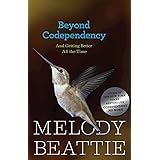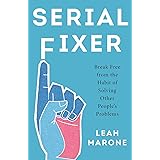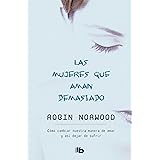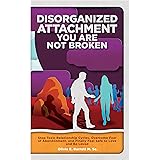The urge to buy can be powerful, often feeling irresistible. Yet, for some, this compulsion crosses a line, evolving into what’s known as a shopping addiction. If you’ve ever felt a rush of excitement from buying, only to be followed by a wave of guilt, regret, or anxiety, then you understand the core issue. However, recognizing this pattern is the critical first step towards reclaiming control and fostering healthier financial and emotional habits.
As discussed in the video above, shopping addiction is a psychological disorder, characterized by an uncontrollable urge to shop. It’s not merely enjoying a new purchase; it’s a deep-seated behavioral pattern that can significantly impact one’s life. Understanding its complexities is vital for anyone grappling with this challenge.
Understanding the Nature of Compulsive Buying
What truly defines a shopping addiction, sometimes referred to as compulsive buying disorder or oniomania? It’s more than just a love for retail therapy; it involves a recurring pattern of excessive, often secret, purchasing driven by feelings of excitement or tension relief, which eventually leads to significant distress or impairment. Imagine if every time you felt stressed, bored, or upset, your immediate, overwhelming thought was to buy something, anything, just to feel momentarily better. This temporary satisfaction, however, quickly gives way to negative emotions.
Consider the broader implications. Over time, this behavior leads to a home cluttered with unnecessary items, often still in their packaging. Your living space becomes a testament to unchecked impulses, making daily life challenging. Furthermore, the financial burden can be immense, resulting in mounting debts, strained relationships, and a constant cycle of guilt and anxiety. These consequences illustrate the disorder’s profound impact on an individual’s well-being and stability.
Delving into the Roots of Overspending
Identifying the causes behind a shopping addiction is crucial for developing effective coping strategies. The path to compulsive buying is rarely singular, often involving a complex interplay of psychological, social, and practical factors. Understanding these triggers provides a roadmap for intervention and healing.
Psychological Factors Driving Retail Therapy
Many individuals turn to shopping as a coping mechanism for a variety of emotional states. When stress builds, boredom sets in, or emotional discomfort becomes overwhelming, the act of purchasing can offer a temporary escape. Imagine feeling a void, a sense of emptiness, and finding that clicking ‘add to cart’ or swiping a credit card provides an instant, albeit fleeting, rush of dopamine. While this offers momentary relief, it doesn’t address the underlying emotional pain, creating a cycle where shopping becomes the default response to negative feelings.
This behavior is often intertwined with deeper emotional needs. Some might use shopping to boost self-esteem, believing new items will enhance their appearance or social standing. Others might be trying to fill an emotional void left by loss, loneliness, or dissatisfaction in other areas of their lives. The problem isn’t the item itself, but the internal void it temporarily obscures.
The Pervasive Influence of Social Pressure
Our society often equates material possessions with success, happiness, and belonging. From an early age, we are bombarded with messages that suggest owning certain items will make us more desirable or accepted. Consider the pervasive influence of friends, family, and especially media. Attractive advertisements and images of celebrities effortlessly flaunting the latest products can create a powerful urge to conform or aspire to a certain lifestyle. This external pressure can be particularly strong for those who already feel insecure or are seeking validation.
Imagine scrolling through social media, seeing countless posts of friends on exotic vacations or showcasing designer clothes. While these posts might seem innocuous, they can subtly amplify feelings of inadequacy, making one believe that happiness or social acceptance is just a purchase away. This constant exposure can erode self-worth, pushing individuals towards compulsive buying as a misguided attempt to “keep up” or feel better about themselves.
Navigating a Lack of Financial Control
Beyond emotional and social factors, practical skills in financial management play a significant role. Many individuals simply lack proper budgeting and spending discipline, which can inadvertently pave the way for uncontrolled spending and accumulating debt. Without a clear understanding of income versus expenditure, or a structured spending plan, the lines between ‘want’ and ‘need’ blur easily.
Imagine never really tracking where your money goes each month. You get paid, spend on various items, and then wonder why your bank account is depleted long before your next paycheck. This absence of a spending plan makes it incredibly easy to fall into impulsive purchasing patterns. When there’s no clear limit or accountability, every shopping trip becomes a potential pitfall, leading to large debts and increasing the likelihood of developing a shopping addiction. Establishing clear financial boundaries is therefore a crucial defense against this compulsive behavior.
The Interconnection with Mental Health Issues
It’s important to recognize that shopping addiction often co-occurs with other mental health conditions. Disorders such as depression, anxiety, obsessive-compulsive disorder (OCD), or certain personality disorders can significantly contribute to or exacerbate compulsive buying behaviors. For someone experiencing the debilitating symptoms of depression, the temporary high of a new purchase might serve as a desperate, albeit unhealthy, attempt to lift their mood.
Imagine an individual struggling with chronic anxiety. The act of browsing online stores or walking through a mall might provide a temporary distraction from anxious thoughts. In these cases, shopping isn’t just a coping mechanism; it’s a symptom of a deeper struggle. It becomes a way to self-medicate, to boost fleeting self-esteem, or to fill profound emotional voids that these underlying conditions create. Addressing these co-occurring mental health issues is often a prerequisite for effectively tackling the shopping addiction itself.
Strategies for Overcoming Shopping Addiction
Overcoming a deeply ingrained habit like shopping addiction requires a multi-faceted approach, combining self-awareness, practical strategies, and, when necessary, professional support. The journey begins with honest self-reflection and a commitment to change.
Acknowledging and Understanding the Problem
The absolute first step on the path to recovery is recognizing and admitting that a problem exists. This may sound simple, but confronting one’s own compulsive behaviors can be incredibly challenging. Many sufferers live in denial, minimizing their spending or hiding purchases from loved ones. Once this critical admission is made, the next phase involves asking yourself what truly drives your purchases. Are you shopping to escape negative emotions, to gain validation, or do you genuinely need the item?
Understanding your motivations is the key to finding effective solutions. Imagine keeping a shopping journal for a week. Document every purchase, no matter how small, and immediately after, note down how you were feeling and what prompted the purchase. This raw data can reveal patterns and triggers you might not have consciously recognized, illuminating the emotional landscape behind your spending habits. This self-discovery process empowers you to address the root causes, rather than just the symptoms.
Establishing Financial Discipline with a Budget
To better manage your finances and reduce unnecessary spending, setting a clear budget is indispensable. This isn’t about deprivation; it’s about empowerment and taking control. Begin by tracking all your monthly income and expenses meticulously. This will give you a clearer picture of your financial situation, highlighting exactly where your money goes and helping you identify how much you can safely spend without falling into debt.
Imagine categorizing your expenses: essentials (rent, groceries), discretionary (dining out, entertainment), and savings. Assign a specific amount to each category. Crucially, allocate a small, realistic amount for “fun money” or non-essential purchases, but stick to it rigidly. Utilizing budgeting apps or simple spreadsheets can make this process straightforward and less daunting. This structured approach to your finances creates boundaries that compulsive spending struggles to penetrate.
Implementing Personal Shopping Rules
Creating your own shopping rules is a practical way to manage impulsive behavior and build new habits. One highly useful rule, as mentioned, is to wait 24 hours before making any significant purchase. This pause can be a game-changer; it provides a crucial window to evaluate whether you genuinely need the item, if it aligns with your budget, and if the initial emotional high has subsided. Often, the urge passes within this waiting period.
Consider other rules: only shop with a pre-written list, leave your credit cards at home when going out, or only buy an item if you can pay for it in cash. You might also decide to unsubscribe from all promotional emails or unfollow tempting retail accounts on social media. Imagine if every time you saw a compelling advertisement, your personal rule automatically kicked in, prompting you to pause and reflect. These self-imposed guidelines act as internal safeguards against spontaneous, regretted purchases.
Building a Support System and Finding Alternatives
Isolation often fuels addiction. Talking to trusted friends or family members about your struggles can relieve immense stress and help reduce the urge to shop impulsively. Sharing your feelings and experiences creates a network of accountability and understanding. Imagine having a friend you can call before making an online purchase, who can gently remind you of your goals and help you resist the temptation.
Crucially, instead of using shopping as an emotional outlet, find healthier and more enjoyable activities. Try exercising, engaging in creative hobbies like painting or writing, or learning a new skill such as playing an instrument or coding. These alternatives not only keep you away from shopping environments but also genuinely enhance your overall well-being, providing lasting satisfaction instead of fleeting highs. Building a fulfilling life outside of consumerism is a powerful antidote to shopping addiction.
Limiting Exposure to Triggers and Seeking Professional Help
To successfully navigate recovery, you must actively limit your exposure to shopping triggers. This includes unsubscribing from promotional emails, unfollowing social media accounts that tempt you to buy, and avoiding physical stores or online platforms known to trigger your urges. Imagine decluttering your digital life, removing all the constant nudges and temptations that previously drove your spending. Creating a ‘digital detox’ from retail stimuli can significantly reduce impulsive urges.
However, if quitting shopping feels too difficult, or if your efforts haven’t yielded the desired results, do not hesitate to seek help from a mental health professional or a financial advisor. A therapist specializing in behavioral addictions can offer effective strategies, cognitive-behavioral therapy (CBT) techniques, and tools to address underlying psychological issues. A financial advisor can help you create a concrete debt repayment plan and teach you sustainable budgeting skills. Overcoming a shopping addiction isn’t easy, but with determination and the right approach, including expert guidance, you can definitely improve your situation and take back control of your life. Recognizing a pattern of compulsive buying is a brave first step, and the resources for recovery are readily available.











